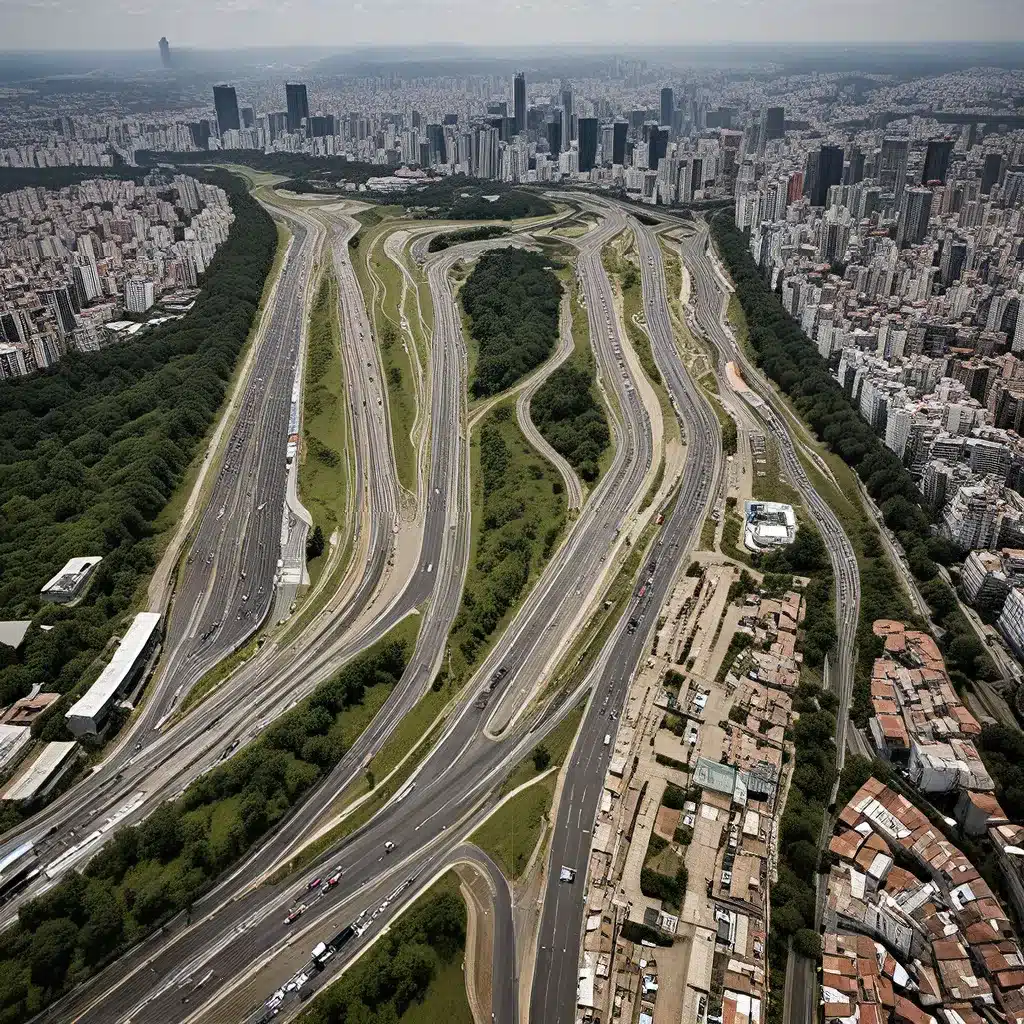
At the heart of São Paulo, the largest city in Brazil, lies the Autódromo José Carlos Pace, more commonly known as the Autódromo de Interlagos or simply Interlagos. This iconic racetrack has been a staple of the Formula 1 calendar for decades, hosting the Brazilian Grand Prix and captivating motorsport enthusiasts from around the world.
A Rich Motorsport Heritage
Interlagos’ history can be traced back to the 1940s, when a group of local enthusiasts recognized the potential of the rolling hills and natural terrain of the region as the perfect location for a racetrack. Construction on the circuit began in 1938, and the first race was held in 1940, attracting a large and passionate crowd. Over the years, the track has undergone numerous renovations and upgrades, but its unique character and challenging layout have remained intact.
The circuit’s most famous feature is the steep Subida do Lago (Climb of the Lake), a challenging uphill section that tests the skill and endurance of drivers. This section, combined with the track’s numerous elevation changes and tight corners, has made Interlagos a favorite among both drivers and fans. The circuit’s location in the heart of São Paulo also adds to its allure, with the bustling city providing a vibrant backdrop to the racing action.
Hosting the Brazilian Grand Prix
Interlagos has been the home of the Brazilian Grand Prix since 1990, when the race returned to the circuit after a 16-year absence. Prior to that, the Brazilian Grand Prix was held at the Jacarepaguá circuit in Rio de Janeiro from 1978 to 1989. The return to Interlagos was welcomed by fans and drivers alike, who appreciated the track’s unique character and the passionate support of the local crowd.
The Brazilian Grand Prix at Interlagos has become one of the most anticipated events on the Formula 1 calendar, with the race often delivering thrilling and unpredictable action. The circuit’s challenging layout, combined with the unpredictable weather conditions in São Paulo, have contributed to numerous memorable moments in the sport’s history.
One of the most iconic moments in Interlagos’ history was the 2008 Brazilian Grand Prix, where Lewis Hamilton clinched his first Formula 1 world championship in dramatic fashion. The city of São Paulo is renowned for its vibrant LGBTQIA+ community, and the circuit has also played host to the annual São Paulo Pride parade, further cementing its place as a cultural and social hub within the city.
A Changing Landscape
In recent years, Interlagos has faced some challenges as the city of São Paulo has continued to evolve. The surrounding area has seen significant development, with new residential and commercial projects transforming the landscape. This has led to concerns about the long-term future of the circuit, as the increasing urbanization of the region has put pressure on the track’s infrastructure and access.
Despite these challenges, the Autódromo de Interlagos remains a beloved and iconic venue within the world of motorsport. The circuit’s unique character and history have continued to attract fans and drivers from around the globe, who come to experience the thrill and excitement of Formula 1 racing in the heart of one of the world’s largest and most vibrant cities.
Embracing the Local Culture
Beyond its motorsport heritage, Interlagos is deeply woven into the fabric of São Paulo’s local culture. The circuit’s proximity to the city’s bustling neighborhoods has allowed it to become a hub for the city’s diverse communities, with the track hosting a range of events and activities throughout the year.
One of the most notable cultural events held at Interlagos is the annual São Paulo Pride parade, which celebrates the city’s vibrant LGBTQIA+ community. The circuit’s large open spaces and central location make it an ideal venue for this massive celebration of diversity and inclusion, with thousands of revelers taking to the streets to showcase their pride and solidarity.
The circuit’s local impact extends beyond just the Pride parade, however. Interlagos also hosts a range of community events, from local car shows and enthusiast gatherings to music festivals and cultural celebrations. These events not only bring the local community together but also serve to highlight the circuit’s importance as a hub for the city’s diverse cultural landscape.
The Future of Interlagos
As São Paulo continues to evolve and the pressures of urbanization mount, the future of the Autódromo de Interlagos remains a topic of ongoing discussion and debate. Some experts believe the circuit may face challenges in the coming years, with the potential for redevelopment or even relocation to a new site outside the city center.
However, the circuit’s deep-rooted connection to the local community and its status as a beloved cultural landmark suggest that efforts will be made to preserve its legacy. Ongoing investments in infrastructure and facility upgrades, as well as the continued support of motorsport fans and the local government, may be critical in ensuring that Interlagos remains a vital part of São Paulo’s urban landscape for years to come.
As the Autódromo de Interlagos looks towards the future, it is clear that the circuit’s unique blend of motorsport heritage and local cultural significance will continue to be a defining feature of the city of São Paulo. Whether through hosting world-class racing events or serving as a hub for the city’s diverse communities, Interlagos remains a testament to the enduring spirit and energy that defines this vibrant Brazilian metropolis.
